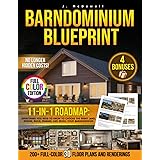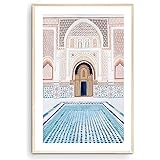Ever walked into a home and immediately felt a sense of awe, a luxurious embrace that whispers sophistication without shouting opulence? It’s a common aspiration for many homeowners, yet achieving that elusive “expensive look” often feels daunting, as if it requires an unlimited budget or an innate designer’s touch. However, the truth is far more accessible than you might think. As explored in the insightful video above, transforming your living space into a haven of elegance is less about extravagant spending and more about strategic design choices.
In this comprehensive guide, we’ll delve deeper into the secrets shared by interior design expert Alex Lee from Design Seeds, expanding on his invaluable tips to make your home look expensive. We’ll explore how clever application of design principles, material choices, and thoughtful personalization can elevate your interiors, creating a truly luxurious home that resonates with style and practicality. Prepare to unlock the potential of your space, moving beyond common pitfalls to craft an environment that feels both exclusive and deeply personal.
Elevating Your Home’s Aesthetic: Proven Strategies for Luxury Interior Design
Achieving a high-end aesthetic in your home doesn’t necessitate a complete overhaul or an endless budget. Instead, it relies on a series of calculated decisions that enhance visual impact, optimize functionality, and exude timeless elegance. The Ashwood Paramount Property Gallery Showroom, featured in the video, serves as a prime example of how these strategies converge to create a truly aspirational living environment. Let’s uncover the core principles that can make your home look significantly more opulent and stylish.
1. Cultivating Visual Interest: The Foundation of an Expensive Home
The journey to a luxurious home often begins by transforming overlooked areas into captivating focal points. Bare walls and long corridors, frequently dismissed as mere transitional spaces, present incredible opportunities for design intervention. In the Ashwood project, for instance, a conventional off-white corner wall and connecting corridors were reimagined with a light wood veneer finish, instantly elevating the entire interior space.
This strategic application of natural materials not only imbues a sense of warmth and coziness but also significantly improves the property’s acoustics, a subtle yet powerful indicator of high-quality design. Furthermore, creating visual interest extends to critical areas like the kitchen. While natural marble commands attention, its cost can be prohibitive for some homeowners. Instead of settling for artificial alternatives like marble-looking tiles, consider highlighting specific elements with premium natural stones, such as travertine. This approach provides an opulent and stylish character without demanding an entire marble-clad kitchen, proving a cost-effective yet luxurious solution.
Strategic Material Choices for a High-End Feel
-
Natural Wood Veneer: Beyond its aesthetic appeal, wood veneer offers durability and a unique grain pattern, bringing organic elegance to walls or bespoke cabinetry. Studies indicate that incorporating natural elements like wood can reduce stress and enhance well-being, contributing to the luxurious feel of a home.
-
Travertine Stone: This distinctive natural stone, with its porous texture and earthy tones, provides a sophisticated alternative to marble. Utilizing it for countertops or backsplashes can create a focal point that screams luxury without the all-encompassing expense of full marble applications. Its timeless appeal ensures longevity in your design choices.
-
Thoughtful Integration: The key lies in selecting high-quality materials for impactful areas. Instead of covering every surface, identify key zones that benefit most from premium finishes, such as a kitchen island, a feature wall, or a statement fireplace. This targeted investment maximizes visual return, making your home look expensive without overspending.
2. Mastering the Illusion: The Power of Mirrors in Luxury Design
Mirrors are far more than just reflective surfaces; they are strategic tools in an interior designer’s arsenal, capable of dramatically altering spatial perception. The careful placement and appropriate sizing of mirrors can amplify a room’s sense of space, injecting a palpable feeling of class and elegance. Conversely, an overabundance or ill-placed mirror can create clutter or an unsettling visual, as the video expertly points out.
Consider the ingenious design in The Ashwood apartment, where an L-shaped balcony offered breathtaking panoramic views but resulted in an off-center dining table. The designers introduced a large round mirror, not merely as decor, but as an illusion of an opening to another space. This clever placement added a captivating touch, visually balancing the open floor plan and enhancing the perceived depth of the room. Research shows that mirrors can increase the perceived size of a room by up to 30%, making them an indispensable element for smaller or irregularly shaped spaces seeking to achieve an opulent feel.
Designing with Reflections: Enhancing Your Space
-
Strategic Placement: Positioning a large mirror opposite a window can draw in natural light and reflect outdoor views, essentially bringing the outside in and expanding the perceived boundaries of your room. In dining areas, a well-placed mirror can reflect the table setting, adding to the ambiance and luxury during meals.
-
Size Matters: While oversized mirrors create drama and expand space, smaller, decorative mirrors can be grouped to form a gallery wall, adding texture and visual interest. The key is to ensure the mirror’s scale is appropriate for the wall and the furniture it interacts with, preventing it from overwhelming or shrinking the space.
-
Framing for Impact: The frame of a mirror plays a crucial role in its overall aesthetic. A gilded, ornate frame can add a touch of classic luxury, while a sleek, minimalist frame might complement a contemporary design. Selecting a frame that harmonizes with your existing decor will significantly enhance its luxurious effect.
3. The Art of Cohesion: Choosing a Timeless Color Scheme
A truly luxurious home often speaks a language of subtle sophistication rather than overt flashiness, and nowhere is this more evident than in its color palette. A common mistake homeowners make is incorporating too many disparate design concepts and colors, leading to a chaotic and less polished outcome. Instead, a cohesive and timeless color scheme forms the backbone of an expensive look, creating a calming and elegant atmosphere.
A monochromatic color scheme, which utilizes varying shades, tints, and tones of a single color, is a prime example of this principle in action. This approach offers depth and interest while maintaining a serene uniformity. As highlighted in the video, limiting your mood board to no more than three or four primary colors ensures balance and consistency. This principle extends beyond paint to furniture selection and loose fittings; every item should reference the overarching color palette to achieve a harmonious and complementing interior. Statistics show that homes with neutral or consistent color schemes often sell faster and at higher prices, underscoring the universal appeal of timeless design.
Crafting Your Signature Palette
-
Embrace Monochromatic Harmony: Start with a dominant neutral color like off-white, beige, grey, or even a deep charcoal. Then, layer in different shades and textures of that same color, from light wall paint to darker upholstery and accessories. This creates visual richness without visual noise.
-
The 60-30-10 Rule: A classic design guideline, this suggests that 60% of your room should be a dominant color, 30% a secondary color, and 10% an accent color. This structured approach helps maintain balance and prevents color overload, ensuring a sophisticated distribution of your chosen palette.
-
Texture as Color: When working with a limited color palette, texture becomes paramount in adding depth and interest. Think velvet cushions, knitted throws, polished wood, rough linen, and metallic accents. These tactile elements provide visual complexity, making the single-color scheme feel anything but boring.
4. Illuminating Luxury: Emphasizing Effective Lighting
Lighting is one of the most transformative elements in interior design, capable of completely altering the perception of space and mood. Good lighting can make a small apartment feel much larger and inherently more luxurious, while poor lighting can undermine even the most expensive furnishings. The secret lies in employing a layered lighting scheme that incorporates various types of illumination to create a warm, inviting, and sophisticated ambiance.
The Ashwood apartment exemplifies this principle, particularly with its L-shaped balcony curtains concealing hidden light troughs within the pelmet. This design produces a soft, diffused wash of light, perfect for creating a relaxed interior mood in the living area. Furthermore, the feature timber ceiling benefits from up-trough lighting along the living area’s feature wall, casting a comforting glow that highlights the architectural detail. Spotlights, also known as eyeball fittings, are indispensable for directing light to specific artwork or architectural features, adding that crucial touch of classy ambiance that defines a truly luxurious home.
A Symphony of Light: Layering for Ambiance
-
Ambient Lighting: This is your general illumination, often provided by overhead fixtures like recessed lights, chandeliers, or hidden light troughs. It sets the overall mood and brightness of the room. Aim for soft, diffused light to avoid harsh shadows and create a welcoming glow.
-
Task Lighting: Essential for functionality, task lighting illuminates specific areas for activities. This includes under-cabinet lighting in kitchens, reading lamps beside a sofa, or desk lamps in a study. Thoughtful task lighting supports daily activities while contributing to the overall design.
-
Accent Lighting: This layer is where true luxury often shines. Accent lighting highlights specific architectural features, artwork, or decorative objects, drawing the eye and adding dramatic flair. Track lighting, wall sconces, spotlights, and picture lights are perfect for this purpose, elevating key elements of your decor.
5. The Ultimate Expression: Personalizing Your Space with Purpose
Beyond aesthetics and functionality, a truly expensive-looking home reflects the unique lifestyle of its occupants. Resist the urge to design a space merely because you saw it elsewhere or because you have an extra room to fill. Instead, personalize your home based on your family’s daily routines, passions, and practical needs. Every corner and every design choice should serve a purpose, resonating with your unique way of living.
The designers of The Ashwood property brilliantly illustrate this concept. Confronted with an extra room, they transformed it into a hidden private mini theater for the young couple, offering a dedicated space for movie nights rather than a rarely used guest bedroom. This intelligent use of space not only adds immense value for the homeowners but also prevents the common pitfall of having functional spaces that remain underutilized. In an apartment setting, where space is often at a premium, creating purposeful areas is the epitome of luxury, catering directly to your lifestyle rather than generic conventions, making your home look expensive in the most authentic way.
Crafting a Home That Lives with You
-
Audit Your Lifestyle: Before designing, honestly assess how you and your family use your home. Do you entertain frequently? Do you work from home? Are hobbies a major part of your life? These insights will guide decisions on room functions and layouts, ensuring every space is truly utilized.
-
Beyond the Obvious: Think creatively about how an “extra” room can serve a unique purpose. Could it be a dedicated meditation space, a home gym, a bespoke library, or a sound-proof music room? Tailoring these spaces directly to personal interests elevates the home’s perceived value and functionality far beyond typical room designations.
-
Curated Collections: Personalization also extends to displaying items that hold meaning to you. Rather than generic decor, showcase art, travel souvenirs, or family heirlooms thoughtfully. These curated collections tell a story and infuse your home with character, making it feel distinctively yours and inherently more valuable. This approach ensures your luxury home design is a genuine reflection of your identity.











